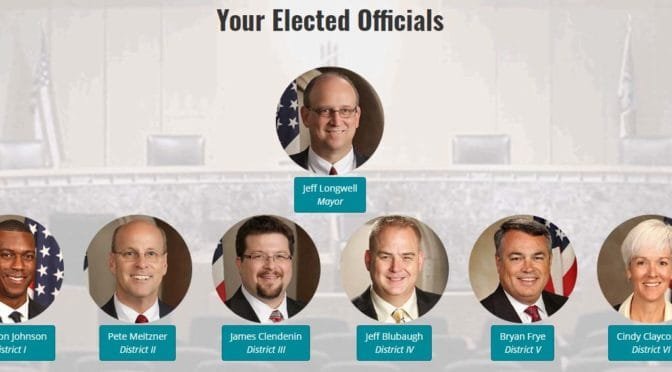How much, if anything, do tax abatements cost?
Someone asked a question regarding an item on the Wichita City Council agenda today: How much will this cost taxpayers?
The item in question is agenda item IV-1: Public Hearing and Request for a Letter of Intent to Issue Industrial Revenue Bonds (WAM Investments #6, LLC).
Attached was an article from the Wichita Business Journal previewing the matter.
How much do these bonds cost taxpayers? It’s important to remember that with Industrial Revenue Bonds in Kansas, cities and counties are not the lender. If this company was not able to pay the bond interest or principle, the city would be under no obligation to pay. The city makes no guarantee as to repayment. Bond buyers know this.
(As an aside, the Business Journal article states: “However, using IRB financing can help the company secure a lower interest rate.” This is simply not true unless the bonds are tax-exempt municipal bonds. Those bonds have a lower interest rate because the interest income is not subject to income tax. But the IRBs considered today are not tax-exempt.)
So if the city is not lending money, and if the city is not guaranteeing repayment, do these bonds have a cost to taxpayers? The answer depends on which side of the fence you sit.
The benefit to WAM, today’s applicant, is that IRBs carry with them tax abatements. Specifically, a whole or partial exemption from paying some property taxes. Additionally, IRBs also enable escape from paying sales tax on purchases made with bond proceeds.
So one way to look at the IRBs is that they do indeed have a cost. The city, county, school district, and state will not receive tax revenue they otherwise would receive.
Supporters of this incentive make two rebuttals. One is that without the tax abatements, the project would not be built. Therefore, no tax revenue. So by abating taxes for a period of time, the project can be built, and after the abatements expire, it will be paying taxes. (For this project, the property tax abatement is for five or likely ten years, with a reduced rate of abatement in the final five.)
The second argument is that by building something, new jobs and commerce are created. These new employees and commercial activity pay taxes. The city and other jurisdictions receive more from these new taxes than they gave up in tax abatements. This is called the benefit-cost ratio. It’s computed by Center for Economic Development and Business Research (CEDBR) at Wichita State University. City documents often refer to something like a “1.57:1 benefit-cost ratio,” meaning that for every one dollar foregone in tax revenue, the city expects to gain $1.57 in other tax revenue.
There are problems with these arguments. For the first: The developer of this project says the incentives are “critical.” If true, this claim exposes a large problem, which is if taxes are so high as to block investment, how are we going to grow as a city and region? Will every project require tax incentives? If not, why do some say they need incentives, and some don’t?
Second: Remember that government says that with the new project, tax revenue will increase. But this almost always happens regardless of whether the company has received incentives. Therefore, the benefit-cost ratio calculations are valid only if incentives were absolutely necessary.
Are incentives necessary? The benefiting companies usually make their case with a lot of numbers and projections, most of which are simply guesses. Plus, there is strong incentive to not tell — to not know — the truth. Here’s why. Suppose fictional company XYZ dangles the idea of expanding its presence in Wichita, or maybe in some other city. XYZ cites incentive packages offered by other cities. Wichita comes up with millions in incentives, and XYZ decides to expand in Wichita. Question: Were the incentives necessary? Was the threat to expand elsewhere genuine? If XYZ admits the threat was not real, then it has falsely held Wichita hostage for incentives. If the city or state admits the threat was not real, then citizens wonder why government gave away so much. No one has an incentive to be truthful.
Back to the item on today’s agenda. How much tax revenue is foregone through the abatements? City documents in the agenda packet did not have these numbers, but a presentation made to council members did, as follows:
Value of one year 95% tax abatement ($6,000,000 at 80%)
City of Wichita: $37,240
Sedgwick County: $33,508
USD 375 (Circle public schools): $61,255
State of Kansas: $1,710
Total: $133,713
These values would apply annually for five years. If occupancy goals are met, the incentives would apply for another five years, at a lower rate. (The values above are 95 percent of the usual taxes. The rate for the second five years would be 50 percent of the usual taxes.)
(As an aside, the Business Journal should not use headlines like it did in this case: “Wichita City Council to consider $6 million in IRBs for industrial spec building.” A better headline would be something like “Wichita City Council to consider $133,713 in annual tax abatements.” That is the real economic transaction that happened today.)
But this is not all. The applicant company will almost certainly receive an exemption from paying sales tax on the building. City documents did not provide an estimate for how much sales tax might be abated, but it could be several hundred thousand dollars.
—
Notes











 This week the
This week the 





